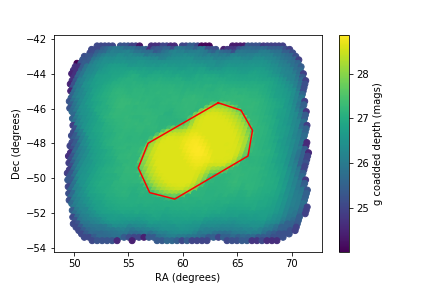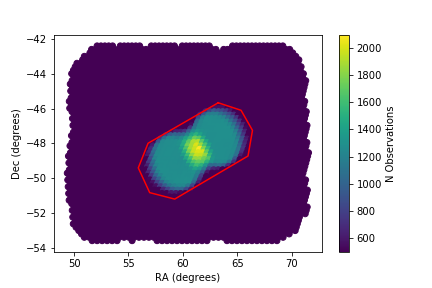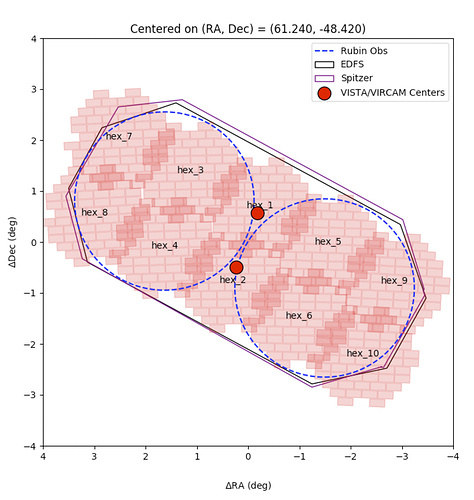We’re starting to look at the best way to observe the Euclid deep drilling fields. For the other fields, we typically dither by shifting up to 0.75 degrees in a random direction. Since the Euclid field is a double field, we’re now trying out preferentially dithering in certain directions to better fill the planned Euclid footprint. Here’s an initial attempt where each field is dithered between -0.25 and 1 degrees towards the other field and between -0.25 and 0.25 degrees perpendicular to the other field.
As always, we’re looking for metrics that could help us tune these parameters so we maximize the scientific usefulness of the observations. Is it better to increase the dither size to get more overlap with the full footprint, or decrease the dither size to increase depth?
 Final coadded depth in g. Euclid footprint in red.
Final coadded depth in g. Euclid footprint in red.
 Total number of visits after 10 years, Euclid footprint in red.
Total number of visits after 10 years, Euclid footprint in red.
 The dither positions used.
The dither positions used.
